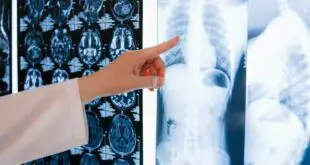After learning that our bodies have traces of metals, the next thing you’ll want to know is how much metal is in the human body.
Metals play a vital role in our everyday lives, from iron coursing through our veins to the calcium fortifying our bones.
And while some metals are essential for our health and well-being, others can be harmful in large amounts.
We’ll discuss various metals in the human body and how they contribute to our overall health and vitality. So let’s get into it by answering how much metal is in the human body.
Regarding weight, the metals comprise only 2.5% of the body mass. Our bodies require approximately 20 essential elements to maintain optimal health and function.
Among these, 10 are metal elements. While each metal plays a vital role in various physiological processes, there are some that we could function without.
Metals Found In Our Body And Their Function
Metals are present in various forms and quantities in our daily diet and are absorbed by our bodies through different sources.
Each metal has a unique function in the body, and deficiency or excess can lead to health complications. Let’s discuss in detail some of the metals found in our bodies and how they benefit us.
1. Sodium (Na)
Sodium plays a vital role in conducting nerve impulses, maintaining proper fluid balance, and relaxing and contracting the muscles. It’s an essential nutrient found in most foods, including table salt.
Our bodies need approximately 500 mg of Sodium daily to function optimally. However, excessive intake of Sodium can lead to high blood pressure, heart disease, and stroke.
2. Potassium (K)
Potassium helps maintain proper heart rhythm and supports optimal muscle and nerve cell communication. The metal is particularly crucial for heart muscle contractions.
Additionally, it assists in balancing fluid levels within cells and maintains healthy blood pressure.
3. Magnesium (Mg)
Magnesium is involved in over 300 biochemical reactions in the body. It helps in energy production, DNA synthesis, protein synthesis, and maintaining the structural integrity of bones.
Additionally, it contributes to maintaining blood sugar levels and blood pressure and promoting healthy sleep patterns.
Magnesium deficiency can manifest as muscle twitches, reduced bone density, restless leg syndrome, and fatigue.
4. Calcium (Ca)
It’s perhaps the most well-known metal found in the human body. This metal is essential for strong bones and teeth. The main source of calcium is dairy products and leafy greens. Low calcium levels can lead to osteoporosis and weakened bones.
5. Chromium (Cr)
Many people don’t know about chromium, but it is essential to insulin metabolism. It facilitates the regulation of blood sugar levels and may also help to improve cholesterol levels.
6. Iron (Fe)
Iron is essential in oxygen transport and storage, a key component of hemoglobin in red blood cells.
Good sources of iron include red meat, poultry, fish, legumes, and leafy green vegetables. Low iron levels can lead to iron deficiency anemia, resulting in fatigue, pale skin, and shortness of breath.
7. Manganese (Mn)
Manganese is a trace element that plays a role in various enzymatic reactions and antioxidant defenses. It’s present in whole grains, nuts, seeds, and leafy green vegetables.
Inadequate manganese levels may contribute to impaired growth and development, bone malformation, and compromised glucose metabolism.
8. Cobalt (Co)
Cobalt is necessary to form vitamin B12, which is crucial for the proper functioning of the nervous system and the production of red blood cells.
Cobalt is in small amounts in animal products such as meat, fish, and dairy. Low levels of cobalt can lead to anemia and nerve damage.
9. Copper (Cu)
Copper is essential for forming connective tissue, brain development, and iron absorption. It can be obtained from organ meats, shellfish, nuts, seeds, and legumes.
10. Zinc (Zn)
Zinc is essential for immune function, DNA synthesis, wound healing, and cellular metabolism. Low zinc levels can impair immune function, delay wound healing, skin disorders, and growth retardation.
11. Nickel (Ni)
Nickel is found in various foods, including nuts, seeds, chocolate, and grains. While nickel is useful in small amounts, excessive exposure can cause allergic reactions, skin rashes, respiratory issues, and potential carcinogenic effects. Nickel deficiency is extremely rare in humans.
12. Molybdenum (Mo)
The element is required for the metabolism of sulfur-containing amino acids and the formation of several essential enzymes. Molybdenum is found in legumes, nuts, and whole grains.
13. Cadmium (Cd)
It is not an essential metal for human health. Note that exposure to high levels can harm various organ systems. Cadmium toxicity can lead to kidney damage, bone loss, respiratory problems, and increased cancer risk.
Testing For Heavy Metals in Your Body
Heavy metals have high atomic weight and density. They include lead, mercury, arsenic, cadmium, and aluminum, just to mention a few.
These metals can accumulate in the body over time and harm our health. Exposure to heavy metals can occur through various means, including air pollution, contaminated food and water, and occupational hazards.
Testing for heavy metals in the body can help identify potential exposure and allow early intervention to prevent further harm.
Hair analysis
Hair mineral analysis is a common testing method for heavy metals in the body. This non-invasive test involves cutting a small hair sample from the scalp and analyzing it for mineral content, including heavy metals.
Hair mineral analysis is useful because hair can provide a long-term record of mineral exposure, unlike blood or urine tests that only show recent exposure.
Blood test
Blood tests can detect recent exposure to heavy metals but may not provide a complete picture of long-term exposure. This is because the body can rapidly eliminate some metals from the blood.
Blood tests are often used to monitor workers exposed to heavy metals on the job or individuals who have ingested toxic substances.
Urine test
This procedure involves providing a urine sample to analyze the presence of various heavy metals.
The test measures the concentration of these metals, indicating whether you have been exposed to them and to what extent.
Urine testing is preferred as it reflects recent exposure and can help identify ongoing contamination.
Electrocardiograms
ECGs examine heart function. Heavy metal exposure can damage the heart and lead to arrhythmias and other cardiac problems.
ECGs measure the heart’s electrical activity and detect abnormalities that indicate heart damage from heavy metal exposure.
Kidney function test
The kidneys filter waste products and excess fluids from the blood, excreting them through urine. Heavy metal exposure can damage the kidneys and impair their ability to function properly.
Testing kidney function involves measuring creatinine levels and blood urea nitrogen (BUN) in the blood. Elevated levels of these substances can indicate kidney damage from heavy metal exposure.
Liver function test
Liver function studies can evaluate how well the liver is functioning. The liver is responsible for processing and detoxifying substances that enter the body, including heavy metals.
Liver function tests to measure levels of enzymes and proteins in the blood that indicate liver damage or dysfunction. Elevated levels of these substances can indicate liver damage from heavy metal exposure.
Fingernails analysis
Fingernail analysis is similar to hair analysis because it provides a long-term record of heavy metal exposure.
Fingernail samples are collected and analyzed for heavy metals such as lead, mercury, and cadmium.
The analysis is useful because it can reveal heavy metal exposure from contaminated water or food sources.
Conclusion
How much metal is in the human body? Our bodies contain trace metals that play vital roles in our physiological processes.
However, it is crucial to maintain a delicate balance, as excessive levels of certain metals can be harmful to our health.
While the presence of metals in our bodies is natural and necessary, accumulating heavy metals can pose significant risks.
And understanding the levels of heavy metals in our bodies is essential for maintaining optimal health.
 Being Human
Being Human




